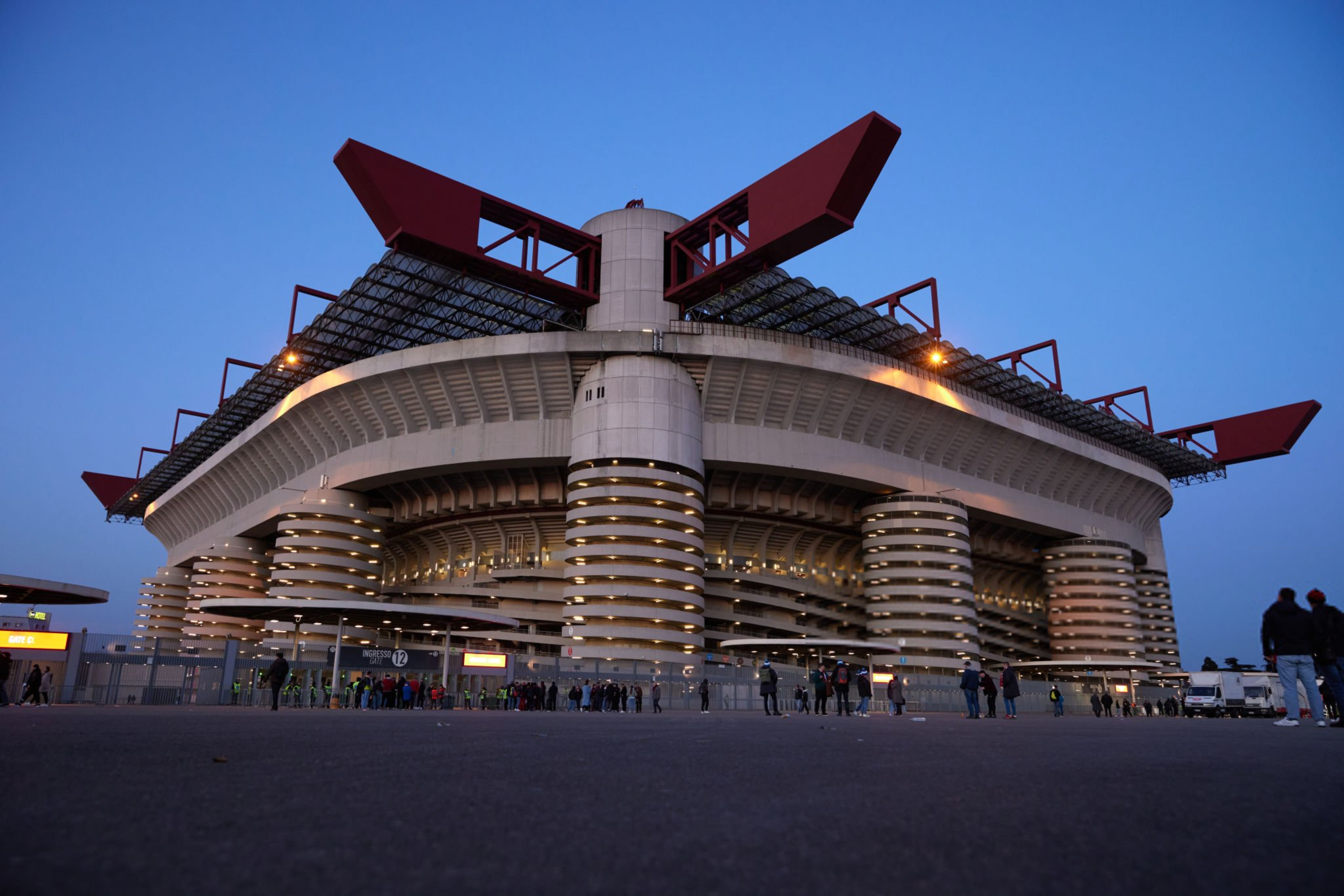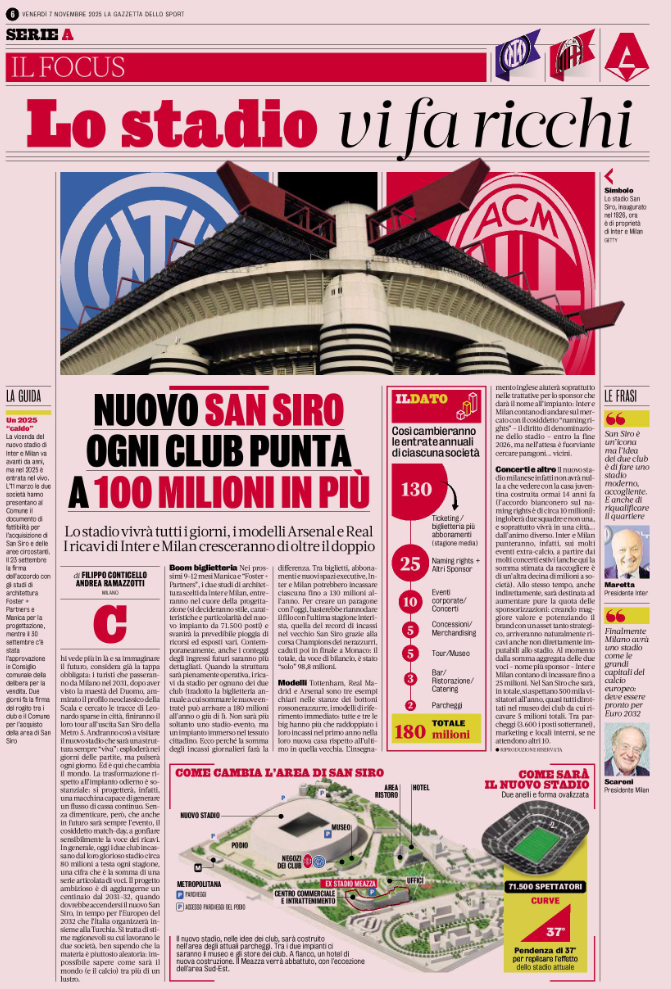Those who can see ahead already view it as an inevitable stop: by 2031, tourists visiting Milan will end their city tour at the San Siro exit of Metro Line 5. After admiring the Duomo, La Scala, and Leonardo’s traces across the city, they will head to see the new stadium, a venue designed to be 'alive'. It will explode with energy on match days and remain active every day. That is where the real change lies.
The transformation from the current structure is significant. The new stadium will be built as a machine capable of generating steady cash flow. Still, match days will continue to be the primary revenue driver. Today, each club earns around 80 million euros per season from the old San Siro, through a mix of different income streams. The ambitious goal is to add another 100 million per club starting from 2031–32, when the new San Siro is expected to open, just in time for Euro 2032, which Italy will co-host with Turkey. These are reasonable estimates the clubs are working with, even if forecasting that far ahead in football and business is uncertain, writes La Gazzetta dello Sport.

Ticket boom:
Within the next 9 to 12 months, the architectural firms Manica and Foster + Partners, chosen by Inter and Milan, will enter the core design phase. They will define the style, structure, and key details of the 71,500-seat stadium. The expected wave of appeals and legal challenges should fade. In parallel, projections for future attendance will become more precise.
Once fully operational, stadium revenues for each club, ticket sales plus new income streams, could reach around 180 million euros a year. The new San Siro will not only host events, it will function as part of the city’s daily life. This is why daily revenue will matter. Between tickets, season passes, and executive areas, Inter and Milan could each earn up to 130 million annually.
To compare, Inter’s last record-breaking season at the old San Siro, driven by their Champions League run that ended in the final in Istanbul, brought in 98.8 million euros in total.
Models:
Tottenham, Real Madrid, and Arsenal are the main benchmarks for both clubs. Each more than doubled its matchday revenue in the first year at their new stadiums compared to their final year in the old ones. The English model will be key for negotiating naming rights, which Inter and Milan plan to bring to market by the end of 2026. Until then, any local comparisons would be misleading.
Concerts and more:
The new Milan stadium will be nothing like Juventus’ facility, built 14 years ago and earning around 10 million from naming rights. This venue will host two clubs instead of one and sit in a city with a different spirit. Inter and Milan will focus heavily on non-football events, especially summer concerts, which could add another 10 million euros per club.
Indirectly, sponsorship income will also grow, as a stronger brand tied to such a major asset increases overall value. Combined revenue from naming rights and sponsorships is expected to reach around 25 million.
The new San Siro is projected to attract about 500,000 visitors a year, most of whom will visit the club museums, generating around 5 million euros. Parking (3,600 underground spaces), marketing, and commercial spaces should bring in another 10 million.
















